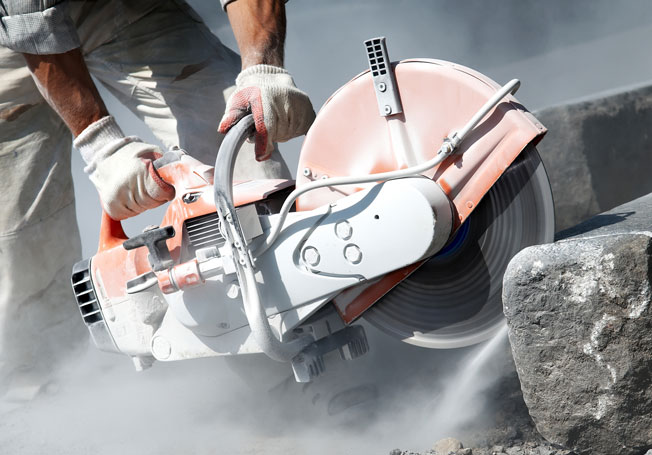Research Paper Spotlight: Measuring Airborne Silica Particles with QCLs
 The original research paper highlighted below, "Aerosol analysis using quantum cascade laser infrared spectroscopy: Application to crystalline silica measurement," can be found at the ResearchGate site: [external web link].
The original research paper highlighted below, "Aerosol analysis using quantum cascade laser infrared spectroscopy: Application to crystalline silica measurement," can be found at the ResearchGate site: [external web link].
Silica in the form of alpha-quartz is a common hazardous pollutant in mining and industry. In this paper, Dr. Pramod Kulkarni and a team of researchers at the Centers for Disease Control and Prevention and the University of Cincinnati demonstrate how quantum cascade lasers can be used to detect airborne silica particles. Below is a summary of their work.
 Mining operations, construction activities, and many other industrial processes commonly create airborne minerals that are inhaled by workers. Exposure to high concentrations of these minerals over time is a significant health risk, and has been linked to lung cancer, kidney disease, COPD, and other disorders.
Mining operations, construction activities, and many other industrial processes commonly create airborne minerals that are inhaled by workers. Exposure to high concentrations of these minerals over time is a significant health risk, and has been linked to lung cancer, kidney disease, COPD, and other disorders.
OSHA and other health agencies have set exposure limits for these pollutants. However, detection and quantification of the minerals is an ongoing challenge. In particular, monitoring exposure during short-term, task-specific activities at the levels recommended by OSHA is limited by available technology. Quantum cascade laser spectroscopy can be used to reach the monitoring standards that OSHA recommends.
In this paper, Dr. Kulkarni and his team used quantum cascade lasers to measure the presence of alpha-quartz (silica), one of the most common crystallized minerals found in industrial activities. They compared a detection system based on QCLs with traditional X-ray powder diffraction (XRD) technology.
The researchers began by isolating silica particles of a size that would be typically inhaled. They included real-world sources such as powder from stone slab cuts, fiber-reinforced cement siding, and coal dust.
The team collected the alpha-quartz silica particles, mixed them with water, and deposited the wet solution on a filter. Once the solution dried, a quantum cascade laser along with an MCT detector from Block Engineering was used to analyze the particles.
Focusing on the mid-infrared range of 750–1030 cm-1, the researchers were able to detect and quantify the amount of silica present. Mid-infrared spectra for alpha-quartz were clearly identified, with peaks at around 798 cm-1.
 Compared to traditional X-Ray Diffraction (XRD) methods, the QCL spectroscopy approach yielded detection limits that were 10 times more sensitive. Scans were often faster due to the improved limits-of-detection; for low concentration aerosols, the QCL required 10 minutes versus 2 hours for the XRD system. In addition, the preparation method used with the QCL system was simpler than the filter redeposition approach often used with XRD and FTIR systems.
Compared to traditional X-Ray Diffraction (XRD) methods, the QCL spectroscopy approach yielded detection limits that were 10 times more sensitive. Scans were often faster due to the improved limits-of-detection; for low concentration aerosols, the QCL required 10 minutes versus 2 hours for the XRD system. In addition, the preparation method used with the QCL system was simpler than the filter redeposition approach often used with XRD and FTIR systems.
Accurate monitoring and measurement of silica and other mineral particles is crucial in order to limit workplace exposure. Dr. Kulkarni and his team demonstrated the promising improvements that QCL spectroscopy may be able to achieve compared to traditional detection methods.
If you are a researcher interested in using QCLs in your work, please contact us for information about how our lasers can help.

